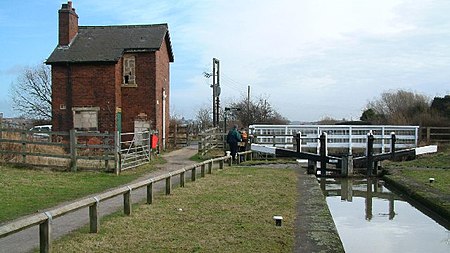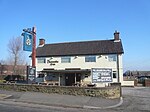Calow is a village and civil parish in the county of Derbyshire in England. The population of the village at the 2011 census was 2,494. Calow is in the North East Derbyshire local government district of Derbyshire and is located immediately adjacent to the larger market town of Chesterfield.
The origins of the village date back to 1086, when it was known as Kalehal (the bare corner of land). In 1430 it was known as Calell, then Calo in 1561 before acquiring its present name. It is recorded that there was a manor house which ’belonged to the king’ around the same time that the Domesday Book was compiled. The manor was in the possession of the successive families of Breton, Loudham and Foljambe, which were notable families at the time.
Coal and iron were worked in the village and for some time blast furnaces were in operation. Coal mined in Calow supplied furnaces in the nearby village of Duckmanton.
Calow is now considered a suburb of Chesterfield, although it is not in the town's borough. The Chesterfield Royal Hospital, built just outside the boundaries of Calow, was opened in 1984. Amenities in Calow include; shops, a small park, a chemist, a primary school and a community centre.
Methodist minister the Rev'd Kathleen Richardson took as her title ’Baroness Richardson of Calow’, after the village, when she was created a life peer in 1998. Baroness Richardson was the subject of an edition BBC Radio 4 programme Lords A Living. The programme, broadcast in January 2011, reflected on the Baroness returning to visit the village in which she spent her childhood.The village Scout Group was formed by the Reverend C. W. Handford in 1933. The group celebrated its 75th anniversary in 2008 with a number of events, some of which were attended by Mr Clifford Parker, a survivor from the original 1933 group. The group has established international links with groups in Canada and Australia.
The Pipe-field (known as the 'Pipey' to locals) is a notable location in Calow. Named as such due to a pipe which runs under the field and is exposed towards one end.









